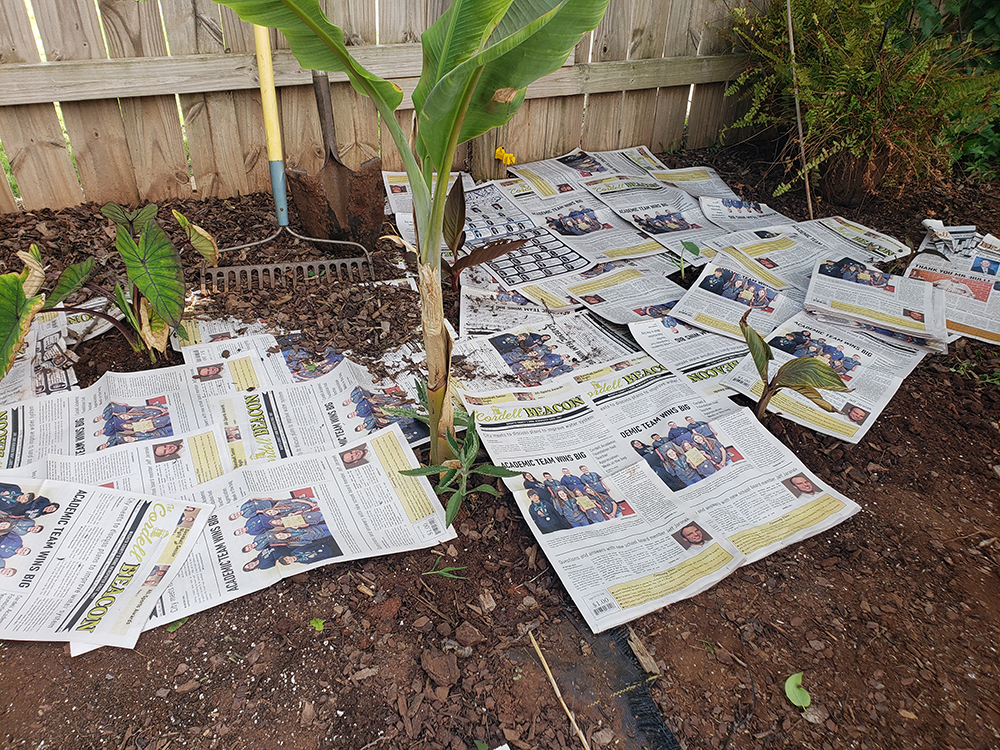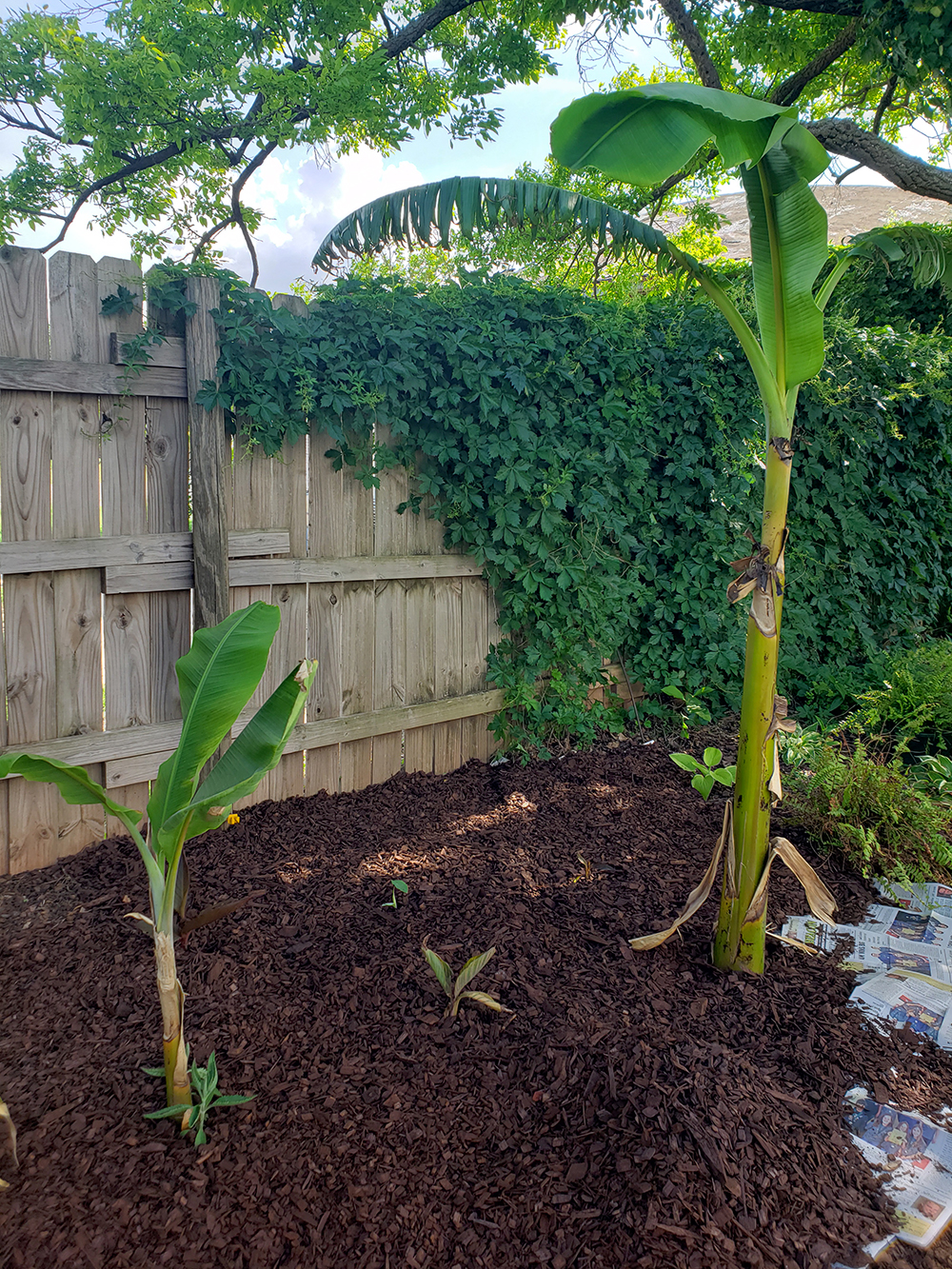We all know too well how grasses and weeds try to take up residency in our garden beds. It is an overwhelming frustration that us gardeners must deal with on a daily basis. Once plants are established in garden beds, it is hard to use weed killers without damaging plants. Weed killers can have residual spray that could drift to nearby plants as well as runoff under the soil that could reach the roots and destroy whatever soaks it up.
If you have areas that have not been planted out yet, then weed killers can save a lot of time and energy. For our gardens, we only use commercial weed killers if we are going to completely clear an area, months to a year ahead of planting. There are also several home-made weed killers that can be made with soap, vinegar, salt, or lemon juice that are good substitutes for chemical sprays and better for the environment, but they too must be used with caution as they will kill anything in their path. Sometimes hand pulling is our only option but there are some time savers that can help us with preventative maintenance.

It is best to use a pre-emergent like Preen in early spring and through early summer to kill the seeds of weeds and grasses left over from the prior year. I use Preen throughout the year and especially when I create a new garden bed to keep those hidden seeds from growing. There are selective weed & grass killers available that will kill out most types of grass while unharming your garden plants. Two types of grass killers that we use regularly and with good success are Hi-Yield Grass Killer and Ferti-Lome Over-The-Top II.
To eliminate the need for an excessive amount of weed killer and to save my hands and back from pulling weeds, I try to build all my dedicated beds with some type of weed barrier covered by mulch, rocks or other medium. For our rock beds, we use a longlife fabric weed barrier before laying 2” of river rock on top. Over time, dirt has collected in low areas of the rock bed incentivizing weeds and grasses to grow. Thankfully because of the weed barrier, the roots typically grow on top of the barrier, so it is easy to grab the unwanted guests by the roots and pull them completely out by hand.
Mulching also does wonders to prevent weeds provided it is thick enough to keep sunlight from reaching the soil. Mulch is also a wonderful way to retain moisture in your garden bed during the scorching summers of Oklahoma. In our tropical and hosta bed, we like to use materials that will break down with the mulch and enrich the soil below. I first experimented with cardboard. After removing all the labels and tape which will not decompose, I laid each box flat around all my plants in the bed and cut pieces of the cardboard to fill in the gaps. To secure the cardboard, you can use matting pins but it is not necessary. Over a short period of time, as the cardboard gets wet, it will conform to the ground and hold its placement if there is mulch or rock placed on top to hold it down.

The Cardboard experiment was a success. The cardboard was thick enough to keep weeds from growing through the medium and it held its place much better than expected. Cardboard kept the weeds at bay for 2 years before it needed to be replaced. This was perfect timing for us since we usually re-mulch our beds every 2 years. By then, half the mulch had broken down to smaller pieces or washed away to the corner of our yard and the weed control was no longer satisfactory. I was happy with the results of the cardboard experiment which became even more apparent when I prepared my bed for a fresh mulching. The cardboard had decomposed nicely on top of the ground and was full of earthworms feeding off the decay. This composted material was worked into the ground as I planted my tropical plants into the bed. This barky compost will aid in root development for my tropical ferns, trees and shrubs that I like to grow in this particular garden bed each summer.
After 4 years of using cardboard, I decided this year I would experiment with the abundant supply of newspapers that I now have available. I raked the remaining mulch to the side of the area to be covered with newspaper and fresh mulch. I laid each newspaper out using a thickness of 10 pages, slightly overlapping each paper. I then threw a few handfuls of the old mulch on top of the papers to hold them in place. Once I had a large enough area covered, I added approximately 2” of mulch over the newspapers. I personally prefer pine bark mulch in our garden beds because I like the natural tones that that it creates in the gardens, plus it breaks down just like any mulch, but the color usually remains the same and does not fade. However, we mistakenly got a brown dyed mulch this go around. I am sure it will work fine for weed control, but I am not sure if it will hold up as well as pine bark mulch. I also learned when spreading dyed mulch that it is best to always wear gloves to keep your hands from getting dyed the same color as the mulch.
Once I complete re-mulching my hosta and tropical bed, I expect to have less weeds to pull and a good moisture barrier in place before it gets hot. My only hope is that I laid the newspaper thick enough that it will hold up for the next 2 years like the cardboard did. If you would like to try newspaper as a weed barrier, swing by The Cordell Beacon and get some!
Charla Ingram is a plant, nature, and golfing enthusiast who, along with her husband Chris, owns and operates C&C Gardens in the small town of Bessie, Oklahoma.